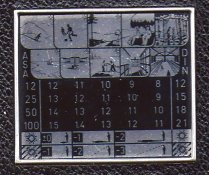I live in the American South, where on occasion the summer noonday sun can be up to two stops brighter than exposure suggested by the sunny sixteen rule. In such conditions you hope you can put the sun behind you and that your camera has shutter speeds above 1/500th and apertures above f/22, in order to retain any semblance of control over your depth of field/action freeze/motion blur.
Sunny sixteen is a bad approximation in many cases. It's designed for temperate sunlight in middle latitudes under sunny but-not-cloudless conditions. Even as a starting point it's not always accurate. Sometimes it overexposes for me in summer conditions, but it also readily underexposes in even slight shadow.
If I have the shutter speed set according to sunny 16 (i.e., the closest number to the film speed) I will open up to f/8 at the slightest hint of my main subject being in shadow, and so on.
My recommendation is to look at the scene you want to photograph and compare the apparent brightness of various areas in the frame to the brightness of the blue sky near the horizon or otherwise away from the sun. Decide what you want to have perfectly exposed, what you want to be dark and what you want to be blown out, and using the brightness of the sky = sunny 16, choose a setting that you think will achieve the best compromise from that, then fix the picture's dynamic range later by your chosen method of film editing.
This is in principle how Ansel Adams would shoot and make prints in times when he did not own a spotmeter, with the principle exception that rather than relying on one point of reference (the blue sky) he knew the absolute luminance of many objects under many lighting conditions, and knew how his film would respond to each successive stop of over or under exposure, something he formalized as the zone system. He even knew the exposure for the full moon in a black sky, and once calculated the exposure for a Pueblo village by moonlight using only that as a reference.
I am a bit puzzled by your camera. I am a longtime fan of the SR-T's, and I believe that your camera is designed to compensate for bright skies by weighting the lower half of the image more if the upper half is above a certain brightness threshold. This is referred to by Minolta as Contrast Light Control or something like that. There are debates about how it actually works but I believe I have seen it in practice. Ah, no matter. Did you try compensating the film speed setting to account for the fact that your battery may be putting put a little too much voltage?
I would say SR-T's underexpose about a stop on a fresh alkali battery, then after a while begin to expose correctly before overexposing for a brief period as the battery dies. Nikkormats were a bit more temperamental to me, and Canonets and Pentax Spotmatics seemed designed to compensate, but I would say an SR-T only needs to be compensated to the next lower normal film speed (i.e. 400 -> 200 ASA). I don't know what that is in DIN but you may have a DIN chart on the back of your camera, as all of my SR-T's have had.
Better luck next time!













